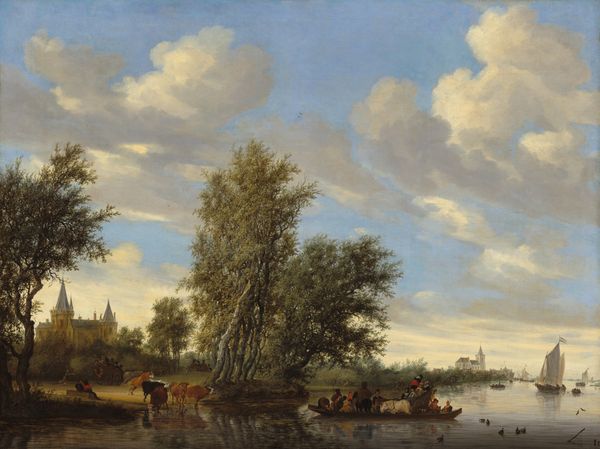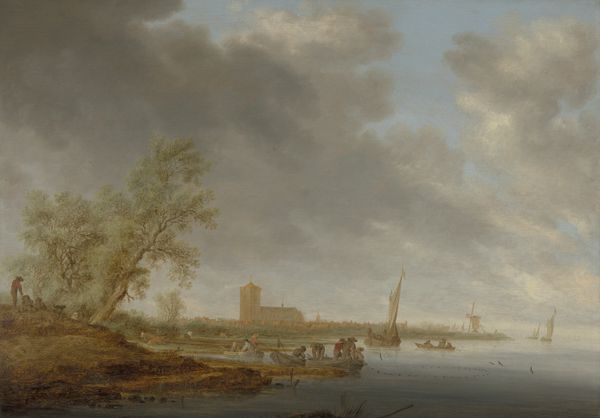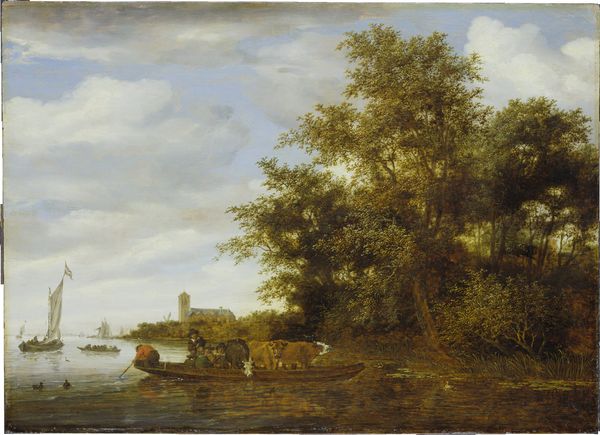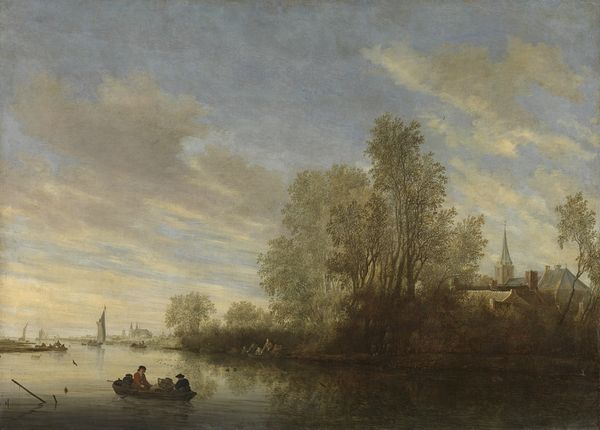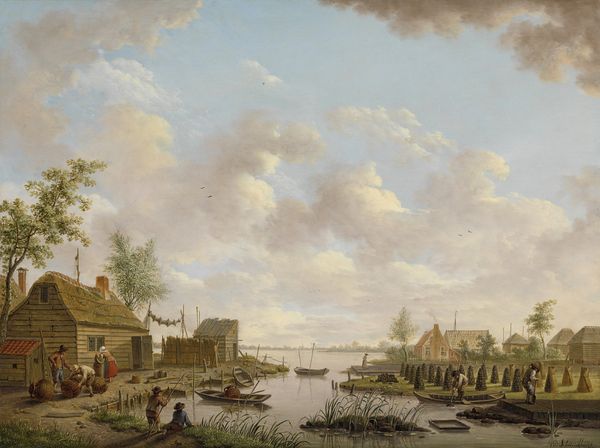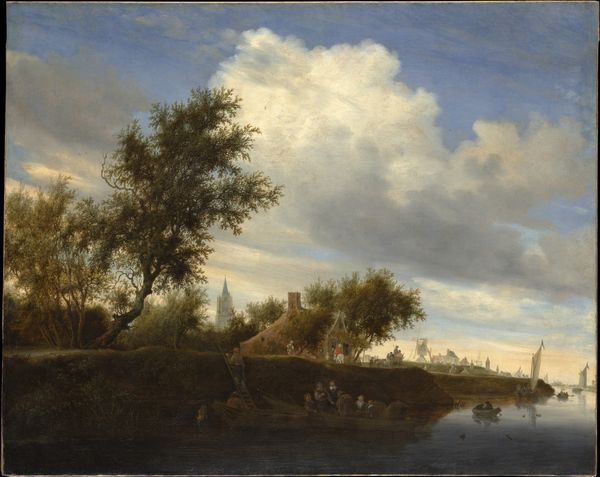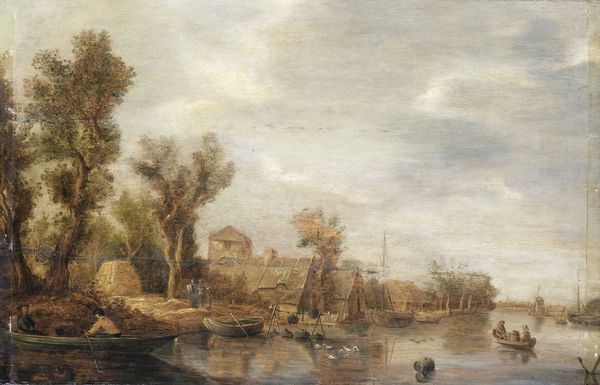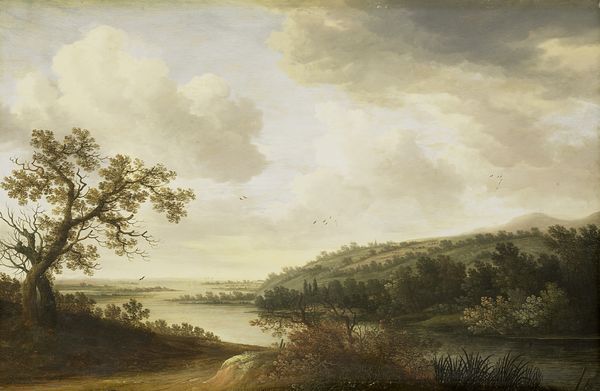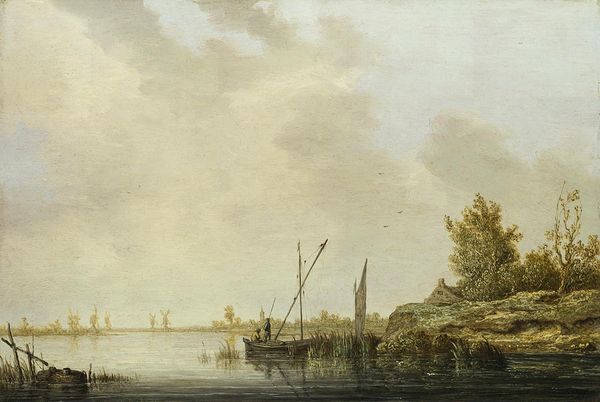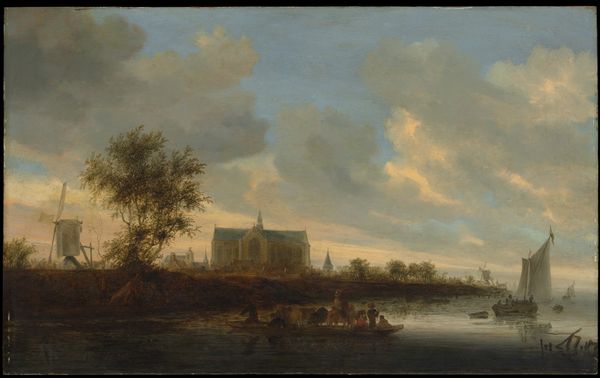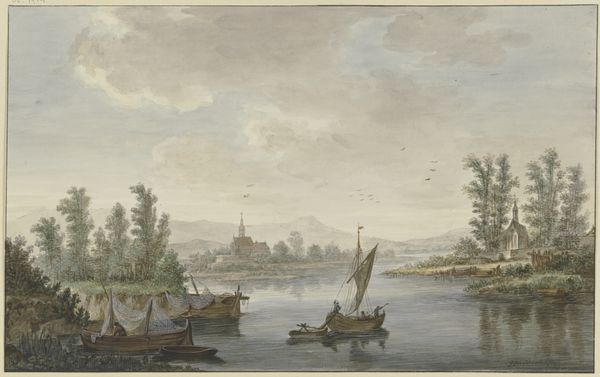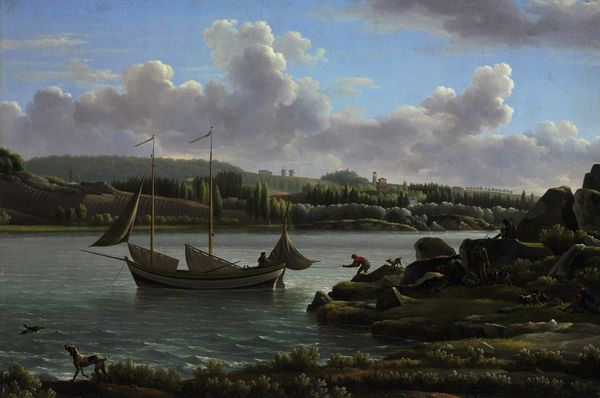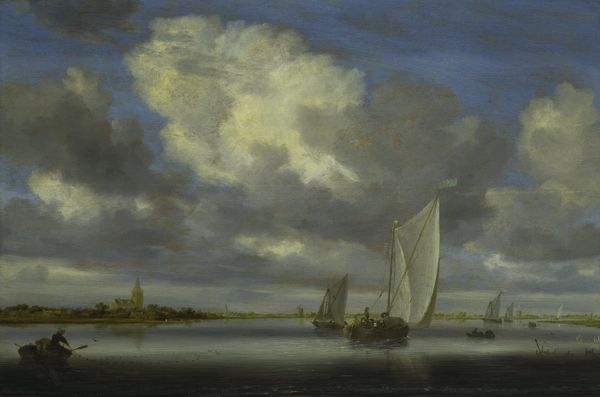
oil-paint
#
dutch-golden-age
#
oil-paint
#
landscape
#
nature
#
oil painting
#
underpainting
#
genre-painting
#
realism
Dimensions: 41 1/2 x 52 7/8 x 1 1/8 in. (105.41 x 134.3 x 2.86 cm) (canvas)
Copyright: Public Domain
Curator: Upon first viewing, the painting exudes a sense of tranquil immensity, dominated by the almost theatrical display of the sky and its interaction with the still river surface. Editor: That’s a keen observation. The work we’re discussing is Salomon van Ruysdael’s "River Landscape with a Ferry," an oil on canvas completed in 1656. Currently, it resides here at the Minneapolis Institute of Art. Ruysdael was a key figure in the Dutch Golden Age. Curator: The brushstrokes across the sky certainly dictate the tempo, wouldn’t you agree? Notice the dynamism achieved through layered, almost scumbled whites and grays. Editor: Absolutely. It speaks volumes about the burgeoning merchant class and their relationship with the waterways vital for trade and transport. The ferry itself is a microcosm of Dutch society at the time. People from different social strata—merchants, farmers—all sharing the same vessel. Curator: Observe also how light is diffused across the water; the composition expertly balances a high horizon line, directing the viewer’s eye through subtle modulations in tone, mirroring atmospheric perspective. It is the embodiment of “tone” itself. Editor: What’s intriguing to me is how Ruysdael represents collective movement. The ferry is not just a means of transportation; it embodies a larger social dynamic, as the Netherlands itself was navigating uncharted political waters in the mid-17th century, defining itself as an independent republic. Curator: And yet, despite the societal narrative, I'm mostly moved by its profound meditation on visual texture—a meticulously rendered surface quality indicative of realism in art of the era. Editor: I see it as both. The formal mastery is undeniable. The social and historical underpinnings are too powerful to ignore, giving depth and added richness to the aesthetic appreciation of van Ruysdael's era. Curator: It allows us, then, a reflective opportunity to interpret art through its construction, material presence and the aesthetic properties. Editor: And consider, too, the human dimension shaped by time and cultural narrative, to really unlock what makes this river scene, so resonant.
